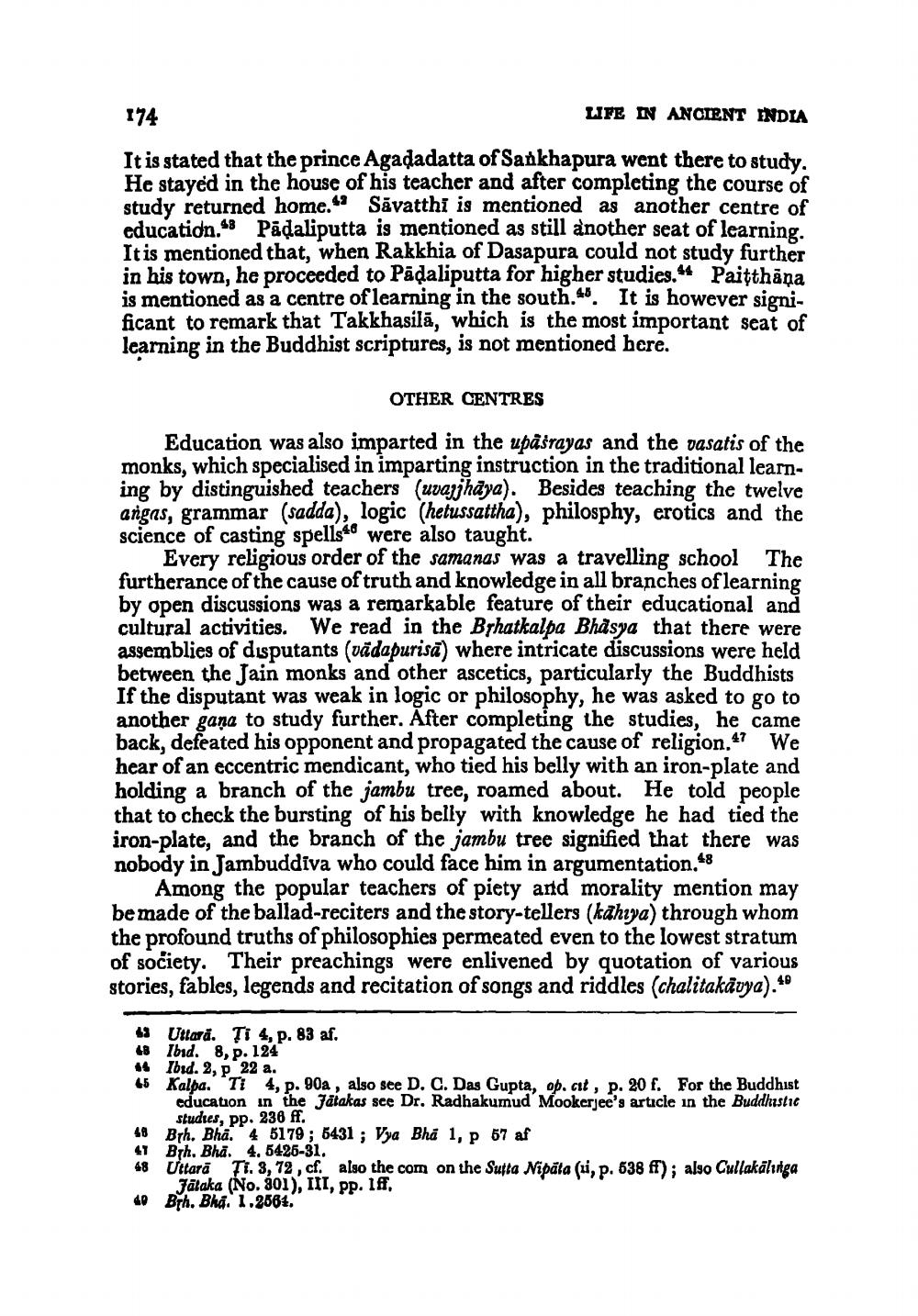________________
174
LIFE IN ANCIENT INDIA It is stated that the prince Agadadatta of Sankhapura went there to study, He stayed in the house of his teacher and after completing the course of study returned home. Sävatthi is mentioned as another centre of educatidn.48 Pädaliputta is mentioned as still another seat of learning. It is mentioned that, when Rakkhia of Dasapura could not study further in his town, he proceeded to Pädaliputta for higher studies.44 Paitthāna is mentioned as a centre of learning in the south.46. It is however significant to remark that Takkhasilā, which is the most important seat of learning in the Buddhist scriptures, is not mentioned here.
OTHER CENTRES
Education was also imparted in the upasrayas and the vasatis of the monks, which specialised in imparting instruction in the traditional learning by distinguished teachers (uvajjhāya). Besides teaching the twelve angas, grammar (sadda), logic (hetussattha), philosphy, erotics and the science of casting spells were also taught.
Every religious order of the samanas was a travelling school The furtherance of the cause of truth and knowledge in all branches of learning by open discussions was a remarkable feature of their educational and cultural activities. We read in the Byhatkalpa Bhasya that there were assemblies of disputants (vädapurisa) where intricate discussions were held between the Jain monks and other ascetics, particularly the Buddhists If the disputant was weak in logic or philosophy, he was asked to go to another gana to study further. After completing the studies, he came back, defeated his opponent and propagated the cause of religion.47 We hear of an eccentric mendicant, who tied his belly with an iron-plate and holding a branch of the jambu tree, roamed about. He told people that to check the bursting of his belly with knowledge he had tied the iron-plate, and the branch of the jambu tree signified that there was nobody in Jambuddiva who could face him in argumentation.48
Among the popular teachers of piety and morality mention may be made of the ballad-reciters and the story-tellers (kahiya) through whom the profound truths of philosophies permeated even to the lowest stratum of society. Their preachings were enlivened by quotation of various stories, fables, legends and recitation of songs and riddles (chalitakavya). 49
43 Uttara. Ti 4, p. 83 af. 48 Ibid. 8, p. 124 44 Ibid. 2, p 22 a. 45 Kalba." 114, p. 90a , also see D. C. Das Gupta, op. cit, p. 20 f. For the Buddhist
education in the Jätakas sce Dr. Radhakumud Mookerjee's article in the Buddhistic
studies, pp. 236 ff. 48 Bth. Bha. 4 5179; 5431 ; Vya Bha 1, p 57 af 41 BTh. Bha._4.6425-31. 48 Uttară TI. 3, 72, cf. also the com on the Sutta Nipāta (ui, p. 638 ff); also Cullakalinga
Jalaka (No. 301), III, pp. 1ff, 40 Brh. Bhd. 1.2564.




